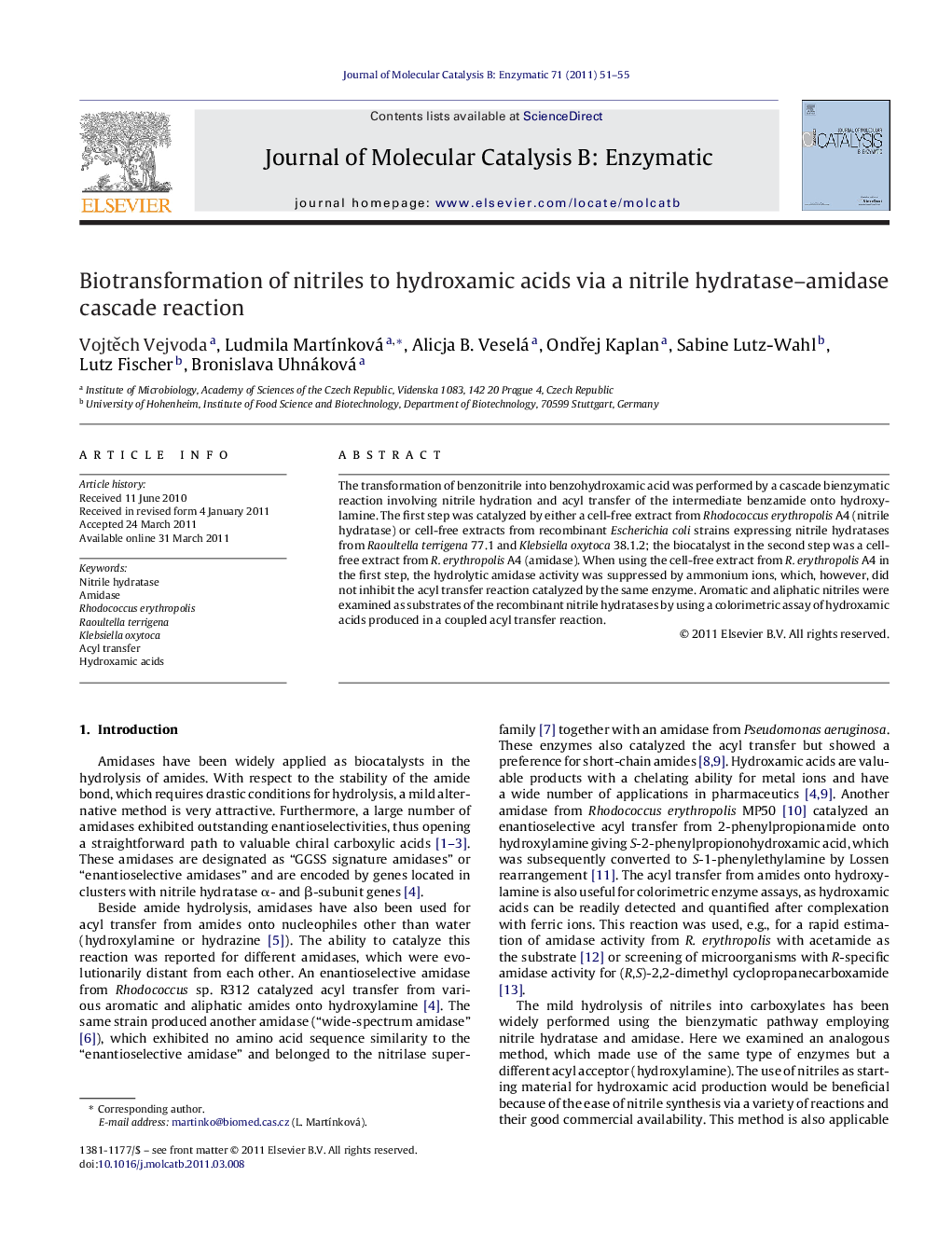| Article ID | Journal | Published Year | Pages | File Type |
|---|---|---|---|---|
| 70211 | Journal of Molecular Catalysis B: Enzymatic | 2011 | 5 Pages |
The transformation of benzonitrile into benzohydroxamic acid was performed by a cascade bienzymatic reaction involving nitrile hydration and acyl transfer of the intermediate benzamide onto hydroxylamine. The first step was catalyzed by either a cell-free extract from Rhodococcus erythropolis A4 (nitrile hydratase) or cell-free extracts from recombinant Escherichia coli strains expressing nitrile hydratases from Raoultella terrigena 77.1 and Klebsiella oxytoca 38.1.2; the biocatalyst in the second step was a cell-free extract from R. erythropolis A4 (amidase). When using the cell-free extract from R. erythropolis A4 in the first step, the hydrolytic amidase activity was suppressed by ammonium ions, which, however, did not inhibit the acyl transfer reaction catalyzed by the same enzyme. Aromatic and aliphatic nitriles were examined as substrates of the recombinant nitrile hydratases by using a colorimetric assay of hydroxamic acids produced in a coupled acyl transfer reaction.
Graphical abstractFigure optionsDownload full-size imageDownload as PowerPoint slideHighlights► Hydroxamic acids were obtained from nitriles by using bienzymatic reaction. ► Ammonia suppressed amide hydrolysis but not acyl transfer on hydroxylamine. ► Acyl transferase was employed in a coupled nitrile hydratase assay.
